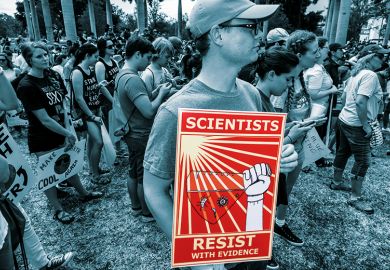The notion that evolutionary biology has something to do with "survival of the fittest" is firmly planted in the public mind. In fact, Darwin did not use this phrase at all in the first edition of On the Origin of Species (1859) nor in other early editions. The phrase is Herbert Spencer's - a 19th-century populariser who was unkindly characterised by a contemporary as "the philosopher for those who have no philosophy" - and by the sixth and final edition of the Origin , Darwin had included it (even changing the title of chapter four from "Natural selection" to "Natural selection or the survival of the fittest").
The now-notorious phrase was subsequently perverted, particularly by "social Darwinists" in the United States in the late 19th century, to suggest that societal inequities are foreordained, even sanctioned, by fundamental evolutionary laws. Henry Ford was one such perverter of the phrase. He also said, famously, "history is bunk". His misreading of this particular aspect of the history of evolutionary thought might be said to be vulgarised history at its bunkiest.
Be all this as it may, the term "fitness" is today most commonly used by evolutionary biologists in the technical sense defined by R. A. Fisher in 1930 as the per capita rate of increase - reproductive output discounted by survival - of a particular type (sometimes a species, sometimes a genotype within a population). Thus defined, fitness depends on trade-offs between fecundity and survival, which themselves will depend on interactions with other species, all subject to changes over time, driven by the dynamics of interactions or external environmental disturbances. Michod's book is devoted to discussion of such "Darwinian dynamics".
Shuttling back and forth between intuitive explanations and formal mathematical presentations, all too often laced with philosophical overtones, he elaborates his basic theme: "There is much more to the dynamics of natural selection than increase of better-designed individuals. The central problem during evolutionary transitions is how to move from groups of lower-level units to a new level of selection."
Much of this agenda overlaps substant-ially with ideas previously developed by Leo Buss ( The Evolution of Individuality , 1987) and J. Maynard Smith and E. Szathmary ( The Major Transitions in Evolution , 1995), whose work Michod discusses. His book nevertheless adds interesting new perspectives, with its formal, mathematical focus on extended dynamical versions of Fisher's fitness as the key to understanding, for example, trade-offs between cooperation and competition, and ultimately the emergence of new evolutionary units. After putting the mathematical machinery in place, Michod applies it in chapter two to the earliest evolution of self-replicating entities, and thence - after discussions of the origin of gene networks, the role of population structure, the evolutionary dynamics of interactions among types, and other things - in chapters five and six to the major evolutionary transition from cells to multicellular organisms.
Some of the mathematical ideas are fun, and do show familiar problems in a fresh light. But, overall, I found the book interesting but idiosyncratic.
For example, what is one to make of one of the main conclusions (in the penultimate paragraph of the book) that "there is no overall adaptedness, no overall property of the organism or other unit of selection that is increased during evolution"?
This represents a kind of evolutionary "political correctness" that is more notably found on occasion in Stephen Jay Gould, but I am baffled by the disjunction between "no overall property... that is increased" and the book's overarching theme of evolutionary complexification as in the early development (possibly through hypercycles) of ever more complicated self-replicators, or from simple unicellular organisms to multicellular assemblies. While evolution certainly does not always lead to progressively more complicated organisms, on the whole I read the fossil record as one of perpetual change, extinctions on every scale and bounce-backs similarly fractal, but leading to ever more complicated organisms and assemblies. An understanding of how all this happens, through the Darwinian dynamics of the evolution of fitness, mediated by spatial structure, kin selection, and much else, is indeed being advanced by theoretical biologists, and Michod and his collaborators are a significant part of this effort. I see the present book, however, more as a stimulating contribution to the technical literature than for the general reader.
Sir Robert May is Royal Society research professor, department of zoology, University of Oxford.
Darwinian Dynamics: Evolutionary Transitions in Fitness and Individuality
Author - Richard E. Michod
ISBN - 0 691 02699 8
Publisher - Princeton University Press
Price - £40.00
Pages - 262



